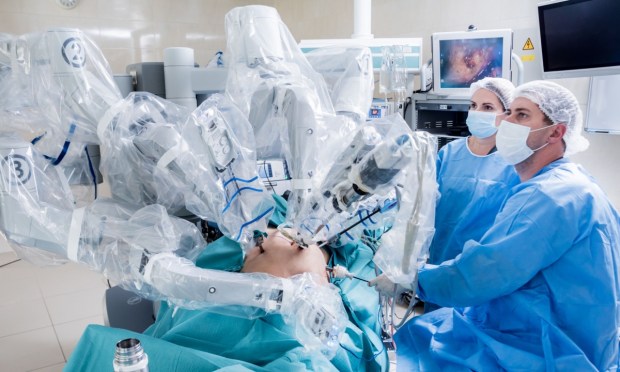
The integration of robotics is reshaping surgical procedures, promising enhanced precision, efficiency, and improved patient outcomes.
Recent earnings reports from industry giants like Intuitive Surgical and Johnson & Johnson (J&J) shed light on the growing demand for robotic-assisted solutions, underlining a shift in the medical technology (MedTech) landscape.
Intuitive Surgical, renowned for its da Vinci Surgical System — a pioneering robotic-assisted surgical technology — recently announced robust first quarter (Q1) earnings, signaling a significant uptick in the adoption of its robotic surgical platforms.
Worldwide, da Vinci procedures grew by about 16% compared with the first quarter of 2023, and the company reported placing 313 da Vinci surgical systems, slightly more than the 312 in the first quarter of 2023. This surge in demand underscores a growing confidence among healthcare professionals in the benefits offered by robotic-assisted surgeries.
In March, Intuitive achieved U.S. Food & Drug Administration (FDA) clearance for da Vinci 5, its next-generation multiport robotic system, authorized for use in all surgical specialties and procedures indicated for da Vinci Xi.
Complementing this momentum, rival company J&J has been making strides in the robotics space. The company’s recent earnings report highlights efforts to fortify its position in the MedTech sector.
In light of this, J&J is advancing the development of the OTTAVA robotic surgical system, scheduled for an investigational device exemption (IDE) application to the FDA in the second half of 2024.
“We believe the future of surgery is personal,” Hani Abouhalka, company group chairman, robotics and digital, Johnson & Johnson MedTech, said when the initiative was first announced last November.
“Starting with the human impact — the connection between the patient, surgeon and OR [operating room] staff — we are unlocking what science and technology can do to improve the surgical experience and health outcomes for everyone involved. OTTAVA is designed to consistently deliver this experience in any OR globally.”
These advancements align with the broader industry trend of leveraging automation and advanced technologies to redefine healthcare delivery standards.
By harnessing the precision and adaptability of robotic systems, surgeons can navigate delicate anatomical structures with unparalleled accuracy, thereby minimizing trauma to surrounding tissues and reducing post-operative complications. Moreover, the minimally invasive nature of robotic procedures holds the potential to shorten hospital stays, expedite recovery times, and curtail healthcare expenses, ultimately enhancing patient outcomes and experiences.
Beyond the confines of the operating room, robotics stands poised to revolutionize various aspects of healthcare delivery. From robotic avatars facilitating doctor-patient interactions to robotics aiding in rehabilitation, the applications of robotics in healthcare are diverse and expansive. These advancements not only streamline clinical workflows but also expand access to specialized care, particularly in underserved regions where healthcare resources may be scarce.
However, the integration of robotics in healthcare presents its fair share of challenges. Concerns regarding cost-effectiveness, training requirements for healthcare professionals, and ethical considerations surrounding the autonomy of robotic systems persist. Additionally, ensuring equitable access to robotic-assisted surgeries and addressing disparities in healthcare delivery will be crucial in realizing the full potential of this technology while upholding principles of healthcare equity and inclusivity.